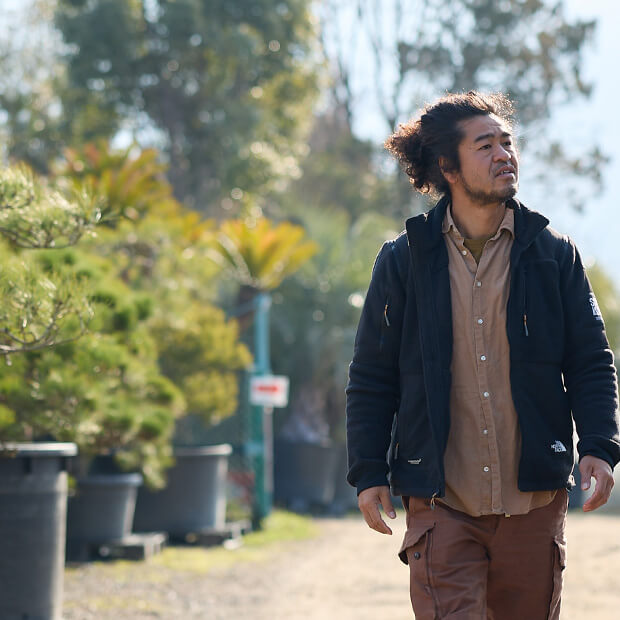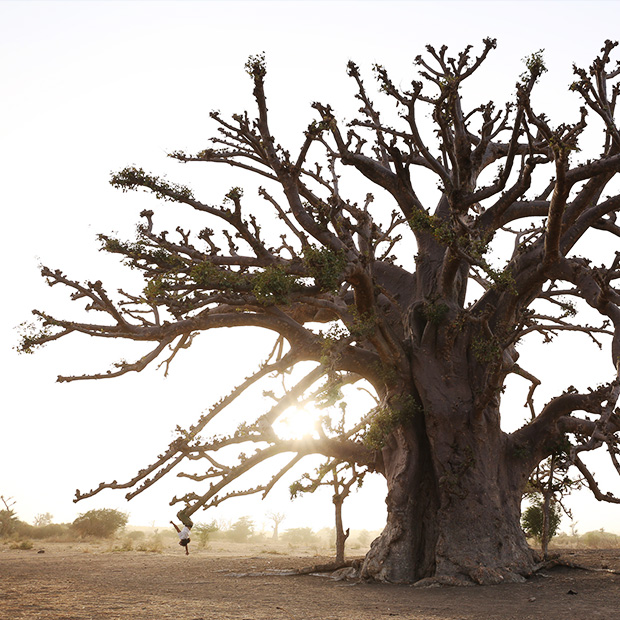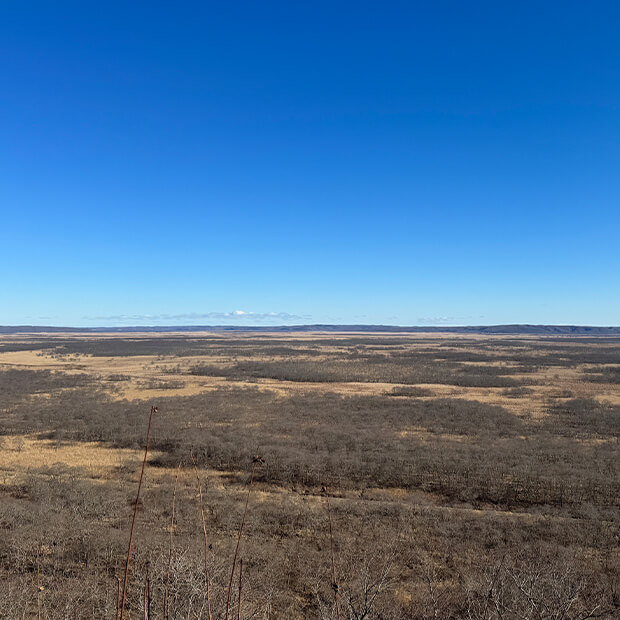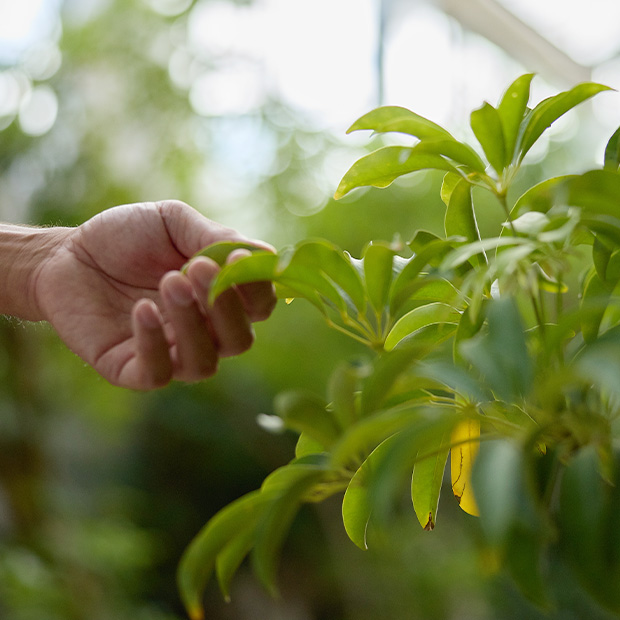Ornithologist Kazuto Kawakami is known for his book titled Don’t Assume I Like Birds Just Because I’m an Ornithologist (translation of the original Japanese title). In his studies of birds, he is undaunted by harsh environments and sometimes explores uninhabited islands and virgin forests with adventurer-like equipment to study the ecology of the birds that inhabit them. Dr. Kawakami talked with Chiharu Adachi, a UX designer at Daikin working on visualization of air and an unrivaled bird lover since childhood. She and Dr. Kawakami, whom she was eager to meet, discussed how birds see and feel air.
Fly, communicate, and feel the wind.
Air is essential for birds to live, even if they cannot see
or recognize it
Adachi:
I have really loved birds ever since I was little, and now I have two zebra finches. Dr. Kawakami, I
have many things to ask you about birds. I love them so much that I even created a bird-related
application as my final project at school.
Kawakami:
I am really grateful that people like you exist. Researchers, especially those in the sciences, tend
to focus on efficiency and don't care about other things as long as they get results. They can only
create things that are difficult for the general public to understand, so there is always a need for
people who serve as a bridge between the two, a kind of interpreter so to speak, in the field of
research. I think an interface like the one you are working on, which makes the latest specialized
technology more accessible to the general public, is very important. In that sense, your task to
make the invisible air visible and communicate it is really significant.
Adachi:
Thank you very much. So, my first question is, how do birds see and feel the air? Many birds fly in
the sky. I imagine that this is because they have acquired the skill to use the air in their
evolution. From the birds' point of view, how do they perceive air? How does it differ from the way
people see and feel air?
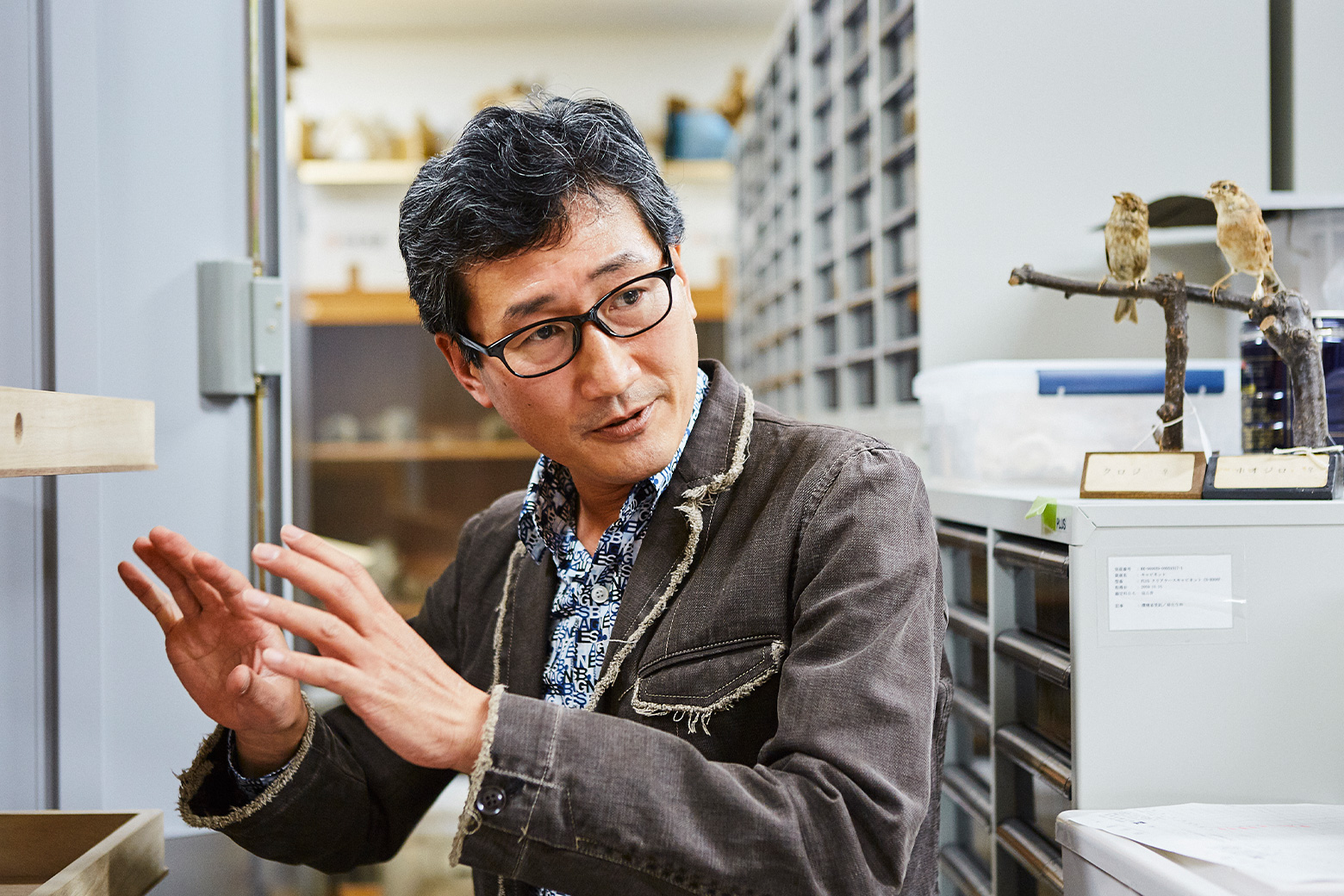
Kawakami:
Since air is invisible to the eye, it is very difficult to sense its presence. I suppose that only
humans can recognize air as a substance that exists. I think that for birds, like other animals, air
is invisible and unknowable. I don't think they perceive it in the same way that we do. Indirectly,
however, I presume that birds sense airflow, such as wind and atmospheric pressure, more precisely
than humans do.
Birds can fly because there is air, and there is its resistance. Without air resistance, birds
cannot fly. In that sense, air is vitally important to them. One of the characteristics of birds is
flying. Can you think of anything else?
Adachi:
Laying eggs? The way they breathe?
Kawakami:
First, the way they communicate. Birds use their voices. Using voices is something you cannot do
without air.
Birds use air to fly and also employ vocal communication to communicate with each other, just as
humans do. It is also important what kind of wind is blowing when birds fly. If they are gliding
without flapping their wings, they can only fly when there is a headwind, or wind resistance. On the
other hand, when they fly by flapping their wings, they cannot move forward if the wind is too
strong. In some cases, they fly faster with a tailwind.
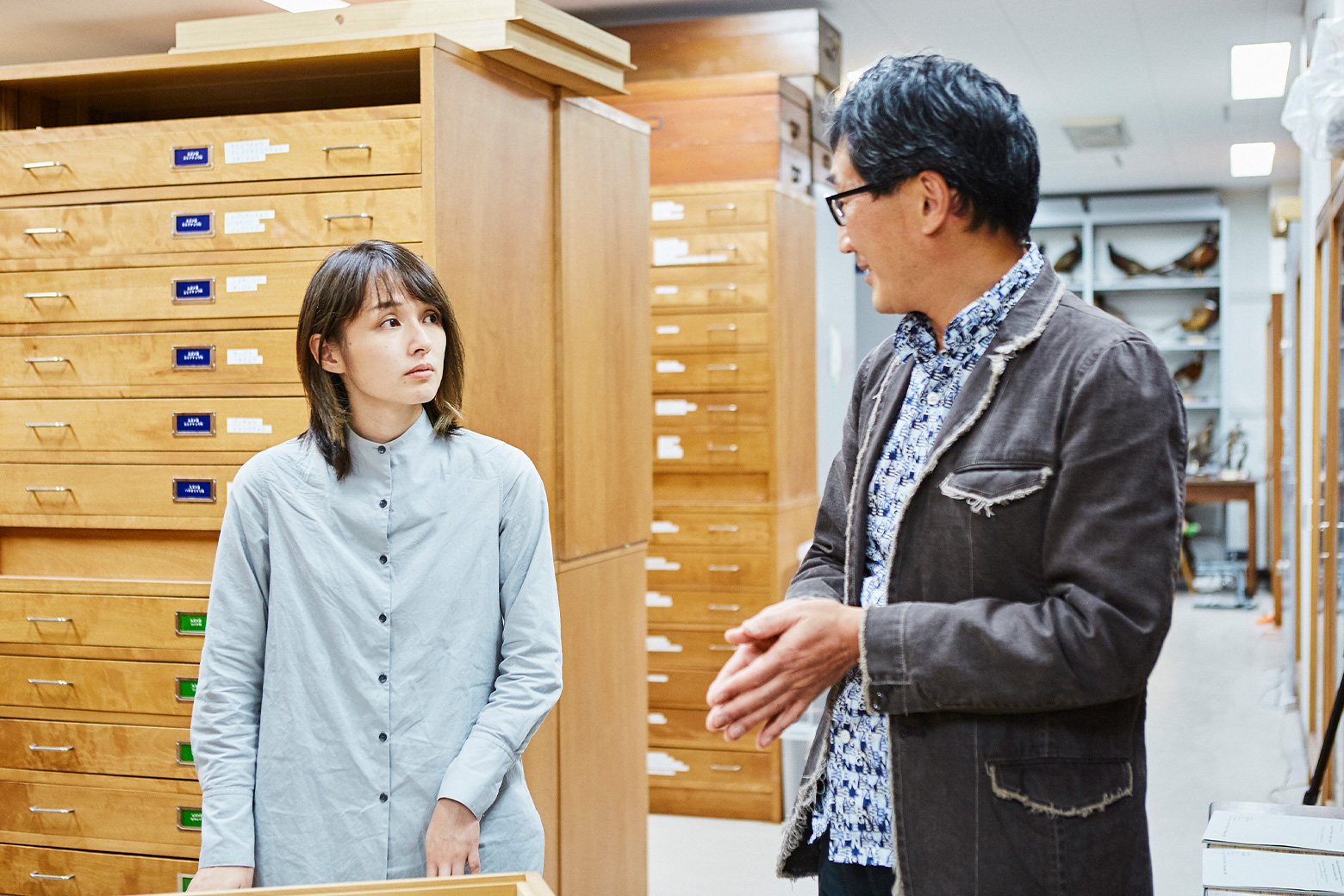
Adachi:
Headwind, tailwind, birds have a suitable way of flying for each.
Kawakami:
And another thing -- some birds, so-called migratory birds, have the habit of migration. They
determine the route and timing of their migration based on wind strength and other factors. Certain
hawks take the route across the ocean to the south, and when doing so, they catch the wind
exquisitely, flying on the wind blowing from north to south.
Adachi:
How do they perceive the wind and air in that moment?
Kawakami:
You would have to ask birds about that. But their bodies are covered with feathers, which have
various functions. One example is “sensory hair,” which acts as a sensory organ.
Adachi:
Is it something like a sensor?
Kawakami:
It’s close. For example, humans also have downy hairs and when a mosquito comes and hits them, we
feel it. The same is true of the hair on our head. We can tell when something stops on it by its
vibration. In the same way, when the wind blows and slightly compresses or ruffles their feathers,
birds sense it and maybe think, “Oh, the strength and direction of the wind have changed.”
Adachi:
Do they decide when to migrate by the feel of the air?
Kawakami:
We don’t really know how they decide, but of course, they don’t check the weather forecast like we
do and say, “Tomorrow, with this pressure system, the wind will blow in this direction, so let's
go.” Those birds are born with that nature, and when a certain wind blows, they just long to go and
take off, I think.
Some birds fail and never reach their destination. I suppose that as they gain experience, they
determine whether they can or cannot make it under the conditions and improve their survival rate.
When people see the intelligent or ingenious behavior of animals, they tend to think that those
animals are smart and have thought things out.
But that’s not so. Individual animals which can and do behave that way survive. Characteristics
equal experience, and the information possessed by the surviving individuals are inherited and
passed on to the next generation. Then the next generation will behave in the same way. In this way,
the individuals of that lineage will remain over time.
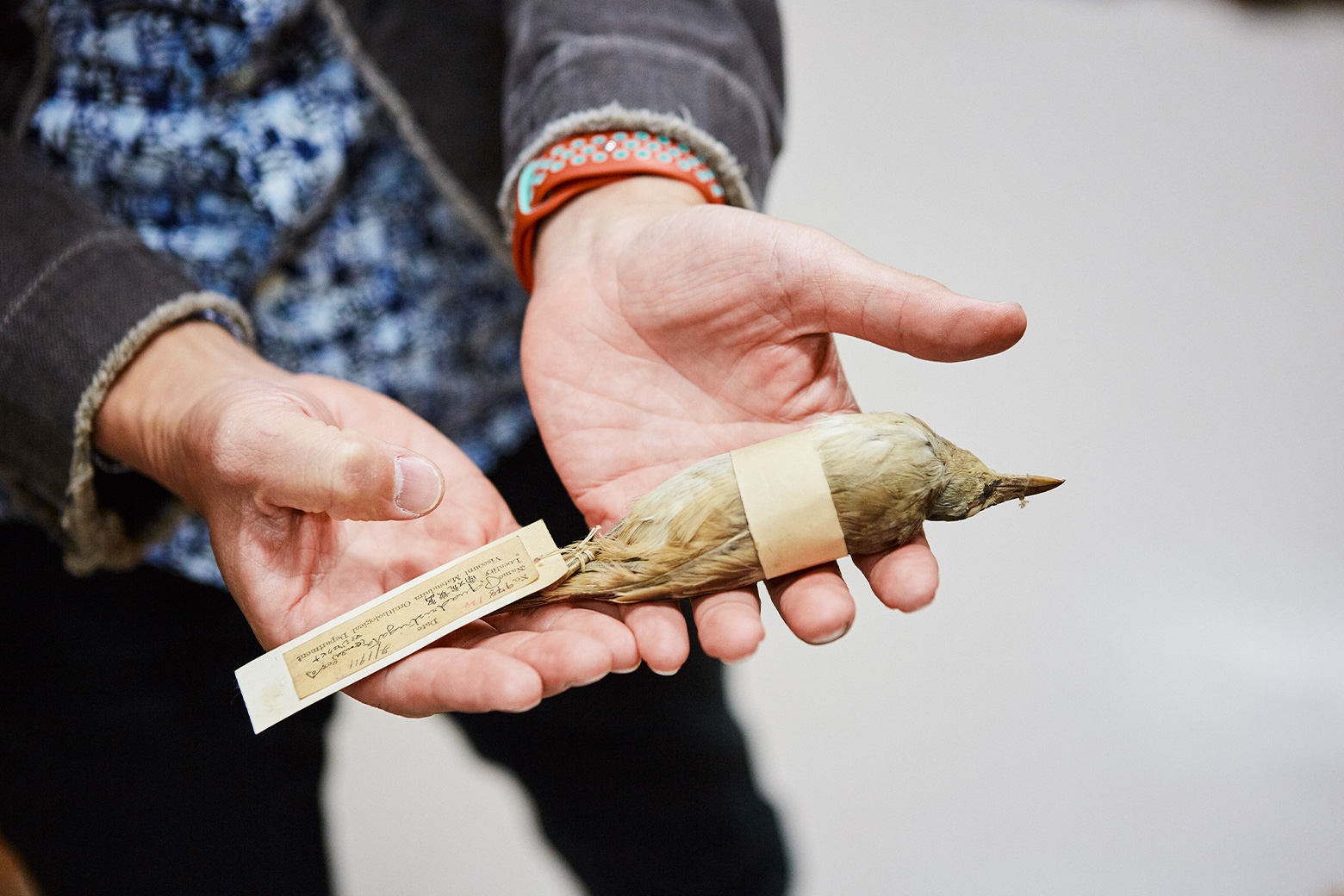
Skillfully using air to fly and protect from the cold and heat
Adachi:
Air also carries smells. Do birds sense the smell of their food, for example?
Kawakami:
It has long been said that birds probably have a dull sense of smell. There is an organ in a corner
of the brain called the olfactory bulb which captures smells. Most individual birds have relatively
small olfactory bulbs. Woodpeckers and shearwaters have large olfactory bulbs and are said to have a
keen sense of smell. These days, other birds are also thought to have a keen sense of smell for what
they eat.

Adachi:
So, air plays a role there, too.
Kawakami:
On the other hand, if they give off a smell, there is a danger of being more likely to be found by
predators. But some birds use smell for communication. A native bird of New Zealand named kakapo is
said to have a distinctive smell described as the “smell of musty violin cases.”
Adachi:
That’s interesting. When we think about air and the environment, temperature and humidity are also
important factors. How do birds adjust to them?
Kawakami:
First, speaking of temperature, crows are black, and black tends to absorb heat. Then, you might
expect crows to get hot and grilled in midsummer. But they don't, because there is a layer of air
between the surface layer of their feathers and skin. Even if the surface temperature gets hot, the
layer of air blocks it, and the hot areas do not come in direct contact with the body skin.
Furthermore, when wind passes through that layer, it is more easily cooled. Thus, it is thought that
the temperature is controlled to prevent an excessively high rise in body temperature, even when the
black surface gets hot.
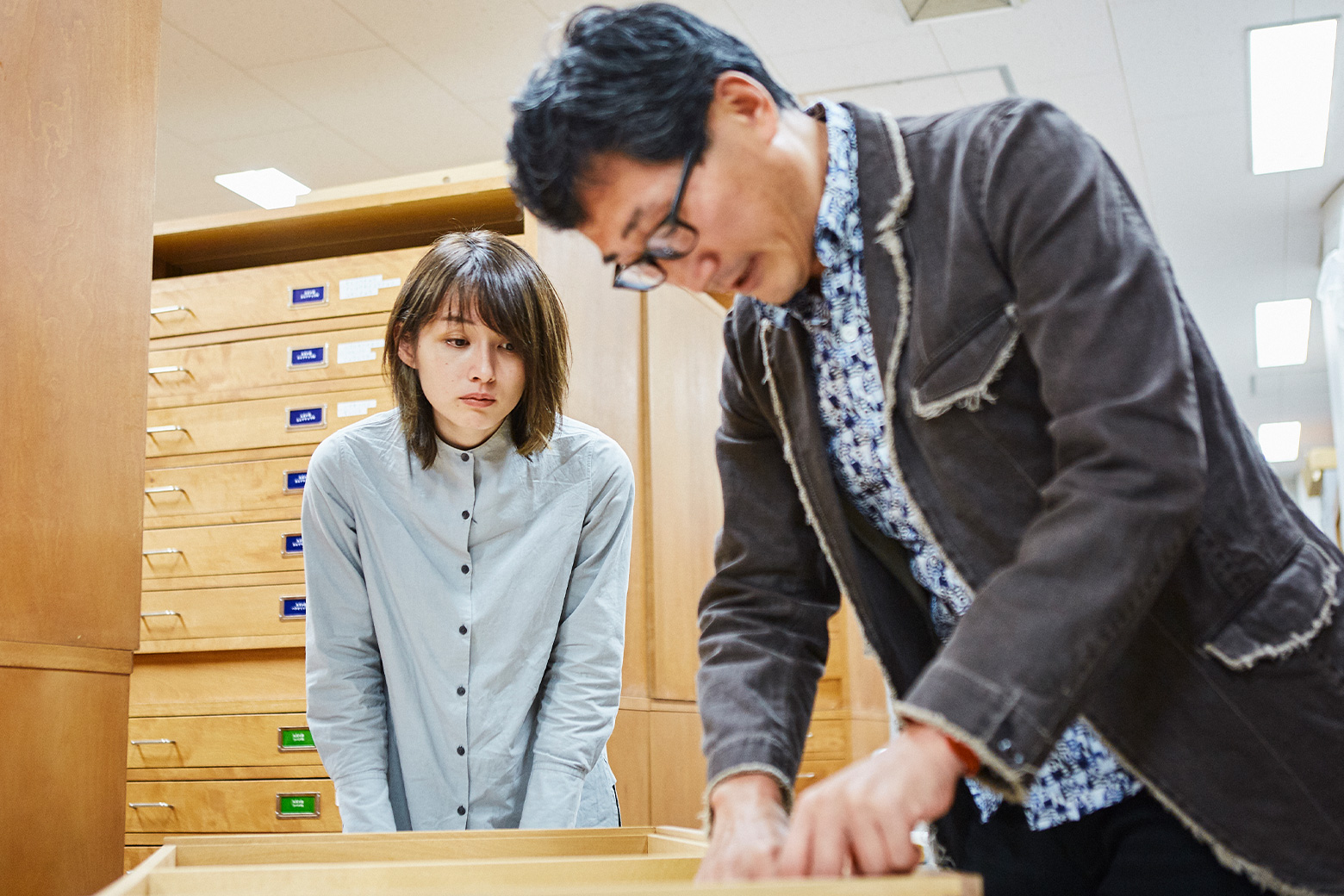
Adachi:
It's a natural air conditioning function.
Kawakami:
That’s right. Then, what about when it's cold? Do you know the word fukura suzume, which means a
fluffed-up sparrow?
Adachi:
On cold mornings of winter, little birds have feathers fluffed up.
Kawakami:
They have feathers inflated to keep warm, the same structure as a down jacket. Humans imitate them
and wear down jackets when it's cold. The down creates a layer of air to keep us warm.
Adachi:
And when it’s cold, little birds bend their necks to hide their beaks in the feathers on their
backs, or they sleep on one leg, with the other leg in the feathers.
Kawakami:
That’s right. They put these parts in the feathers. They reduce the exposure of featherless areas,
such as beaks and feet, to prevent exhaustion of energy. It is not because they are smart, but
because creatures that behave that way survive.
I suppose birds which slept standing on both feet, with their skin boldly exposed in the middle of
winter, would have died quickly as their energy was exhausted, whereas birds which put their beaks
in their feathers to protect them from the cold consumed less energy and survived in larger numbers.
I think it’s better to think this way.
Adachi:
The different approaches of birds to air are very interesting.
Each habit of birds may have been a branch point of adaptation and survival in the environment. In
UI design, too, while a variety of approaches to a task or situation are possible, we try to figure
out why the more appropriate one is appropriate and why a less appropriate one is inappropriate and
then make a choice. As I listened to your explanation, I felt a similarity between the evolutionary
process and the design process.
What is true coexistence with birds?
Adachi:
I am currently involved in a factory greening project, which started with the idea of creating green
factories to address environmental issues and global warming. Personally, I hope that birds will
come to the factory, and if it really happens, I think it may be possible to create a place where
birds and humans live together well. What do you think?
Kawakami:
The first thing I want you to think about is, do you want to create nature for humans or nature for
nature? I think these two are totally different.
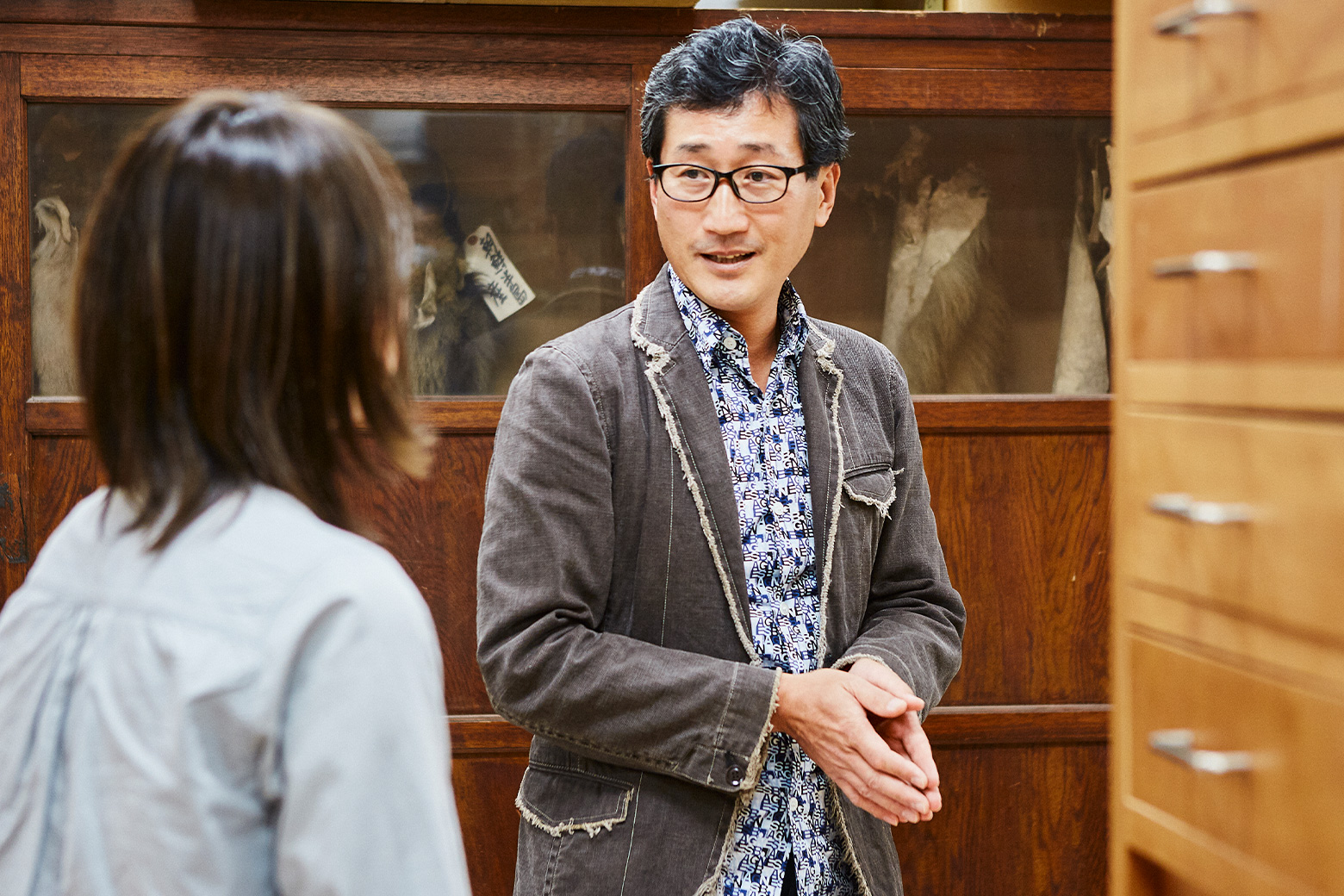
Kawakami:
If you create a pleasant natural environment for humans, it may not be pleasant for birds at all. I
have been to Minami Ioto Island to do research and this island has never been developed by human
hands and is kept in a very pristine state. You might think it is a bird's paradise of natural
splendor, but it is not. There are lots of birds but no big carrion eaters like field mice to clean
up the carcasses quickly, so there are a lot of dead birds on the ground. The smell is terrible, and
the air is such that you never want to take a deep breath because it is full of flies. But you have
a pristine ecosystem there, real nature.
Maybe that's not the kind of nature you want. If you want nature to be pleasant and beautiful for
humans, it may not actually be a true symbiosis with nature. In that case, you should base it on the
policy to create something “nature-ish,” which is comfortable for humans.
Adachi:
You’re right. That was my image. I said, “live together,” but I didn’t mean pristine nature.
Kawakami:
I think it is generally the case. However, as society matures and knowledge is accumulated like
this, we must develop a deeper understanding of nature as well. If we take one step further from the
image of clean, beautiful nature for humans and ask what is true nature, including birds and
animals, I think the relationship between people and birds and between people and nature will
gradually change.
Adachi:
Thank you very much. I will keep what you have said in mind. I want to be able to live in harmony
with birds in the true sense of the word, not by my own preconceptions or at the convenience of
humans.
Kawakami:
That's good. If more and more people had such a feeling and thought hard in their respective fields,
we could someday find a new form of symbiosis with birds. I think air will also play an important
role in that.
Adachi:
I was eager to know how birds see and feel air, and how the world would look if I were a bird. In
fact, like other people, I can't see it. And temperature, air currents, sound, and so on... air is
the medium all the same.
But birds have interacted with air through their bodies and behavior for hundreds of millions of
years of repeated survival. Besides the examples Dr. Kawakami cited in our conversation, it is
exciting to think that birds may have other ways of dealing with air that we don't know yet. For
designers working at Daikin, how to express air is a major theme. In my own work, I would like to
challenge myself to create new expressions with a view of air as perceived by people as well as air
as perceived by nature.
Also, the role of an interpreter was brought home to me in our conversation.
I think designers in their daily work and in the specialized field of air have the role to connect
the public with what the company wants to do and the future it wants to achieve.
Especially in activities like my factory greening project, we should avoid the self-righteousness
that is often seen at companies and in people. I strongly want to develop the factory greening
project into one in which humans and nature harmoniously coexist with the local community.









